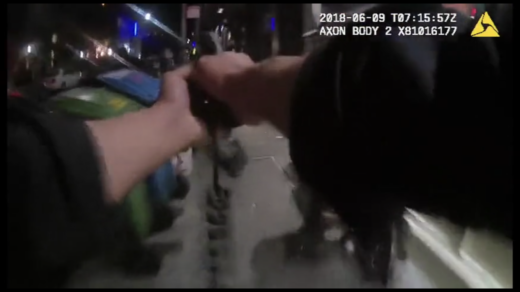An investigation by the San Mateo County District Attorney's Office found the shooting was justified.
The episode led to a $10 million civil rights lawsuit by Gaines' family alleging the shooting was motivated by racial bias. The suit was settled for $250,000 in 2014. As is typical in most settled cases, the city did not admit wrongdoing. A second suit filed over the Gaines shooting was dismissed on procedural grounds.
Cabillo joined the San Francisco Police Department in 2013.
In a 2015 suit that also alleged racial bias, Cabillo and other officers were accused of punching, body-slamming and twisting the arm of Travis Hall, 23, after a traffic stop in the South of Market neighborhood. Records show the city paid $40,000 to settle the case with Hall, an African-American who was then a graphic arts student.
In a suit arising from a separate 2015 incident, Cabillo and another officer were accused of detaining a man, Bryant Chappell, near 22nd and Mission streets, and throwing him to the sidewalk. Chappell, who reportedly suffered a broken nose and facial abrasions, was charged with resisting arrest. That charge was not prosecuted, and the city settled the case for an undisclosed amount.
The city did not admit wrongdoing in either the Hall or Chappell cases.
A spokesman for the SFPD had no comment on the suits against Officer Cabillo during his time with the department. When asked about the 2012 shooting, the spokesman said Cabillo's prior employment is a personnel matter and confidential under California law.
Cabillo's most recent incident began just after midnight June 9 at the corner of Grant Avenue and Vallejo Street when he and a second, unidentified officer approached a group of four men they believed were drinking in public.
In bodycam footage, Cabillo can be heard speaking with the four men about open alcohol containers and saying, "No one's going anywhere," as Barcenas appeared to edge away from the group. The video then shows Barcenas turning and running along Grant Avenue. Cabillo chases Barcenas on foot.
Police say that as he ran, Barcenas took a Glock .45-caliber handgun from his waist. As Cabillo dashed past bystanders, he opened fire, and Barcenas fell to the sidewalk.
In the video, Cabillo's weapon can be heard being discharged twice. Asked by another officer where Barcenas had been wounded, Cabillo says, "Two shots in the back." At another point, Cabillo reaches down to the wounded and apparently semi-conscious Barcenas and says, "Dude, are you all right?"
Frame-by-frame viewing of the video shows Barcenas removing his jacket and dropping it as he ran. There's no evidence in the video that Barcenas brandished a weapon or pointed it toward Cabillo. According to SFPD’s use-of-force policy, an officer should use deadly force only “as a last resort when reasonable alternatives have been exhausted or are not feasible to protect the safety of the public and police officers.”
Barcenas was reportedly treated for life-threatening injuries at San Francisco General Hospital and was released into police custody last week.
SFPD has confirmed that the June 9 incident marks Cabillo's only shooting during his time with the department. Cabillo remains on administrative leave following the incident.
SFPD’s homicide detail and internal affairs division, the San Francisco District Attorney’s Office and the city Department of Police Accountability are all investigating the shooting.

